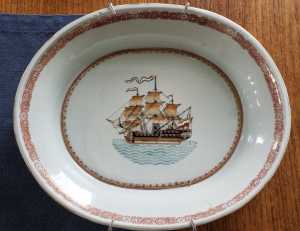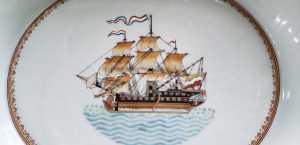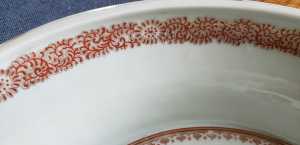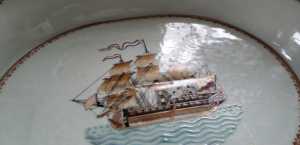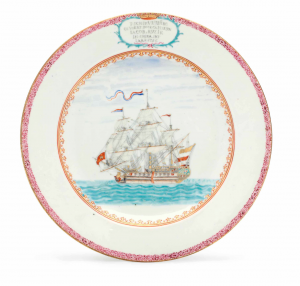The Chinese and Asian Art Forum. For Fans, Collectors and Dealers.
 Basic Rules For the BidAmount Asian Art Forum: Talk about whatever you want. You can even discuss and offer things that are for sale if they are authentic. Maximum image file size per post is 2 MB. Images of 700pxl x 700pxl are optimal if saved at a medium resolution. Be respectful of others and enjoy yourself. Click the YouTube link for a brief tutorial on using the forum. You can also EMBED Videos by cutting and pasting from You-Tube, Vimeo etc.
Basic Rules For the BidAmount Asian Art Forum: Talk about whatever you want. You can even discuss and offer things that are for sale if they are authentic. Maximum image file size per post is 2 MB. Images of 700pxl x 700pxl are optimal if saved at a medium resolution. Be respectful of others and enjoy yourself. Click the YouTube link for a brief tutorial on using the forum. You can also EMBED Videos by cutting and pasting from You-Tube, Vimeo etc.
NOTE: To post an item or add a new post, click open the category title from the FORUM LIST, and CLICK the Blue ADD TOPIC button.
@lotusblack That would be such an interesting thought! One question I had while thinking about this piece was "Why the Jiaqing mark?" considering all Hong bowls are Qianlong. If there was an intent to fool, I'd think they'd put a Qianlong mark or none at all, but then I would fall into a dangerous presumption of authenticity.
Ah, interesting.
If I came across this browsing I would note the following as red flags: the inclusion of national flags, the mark, the military theme with the fort, and the inclusion of Chinese script. The mark and script I don't think I've seen on famile rose exports before. Taken together, these would suggest an attempt to sweeten the piece as much as possible.
When I was a wee novice just starting out (OK, just a couple of years ago!) I purchased a late 20th c. platter that was posing as an export with a ship; it had a rather convincing orange peel surface. (It arrived broken so I ended up paying nothing and now it is repaired and graces my kitchen wall, high up.)
Interesting! I didn't see the national flags, or fort problematic because it is a scene I've been hunting for. The flags are for the "Hongs at Canton", which were national factories where each nations' China trade merchants would operate from. The fort is the Dutch Folly fort on the Pearl River just outside of the Hongs at Canton, which was usually depicted in the Hongs at Canton bowls. Here's a genuine 18th century one:
https://www.nationaltrustcollections.org.uk/object/959642
I wonder if this bowl pulled from the "landscape" Jiaqing marked bowls with Chinese script floating and merged it with the "Hongs at Canton" scene? The copies/fakes that are unique and don't attempt to copy every single element are the ones that throw me off the most.
By the way, I'd love to see that 20th c. platter if you have a photo 😀
After seeing the exterior I have seen this before I think it’s a Hong bowl. I saw one in a museum way back in the day.
Bill Harding, of some fame on Asianart.com, is quite knowledgeable about Chinese porcelain, especially rose medallion.
It is my understanding that ‘Rose Mandarin’, what I call Mandarin, is strictly a late 18th c. export porcelain ware - NEVER marked with a reign mark.
Rose Medallion is derived from Canton Famille rose wares of the early 19th c., but is distinct in having rose, fruit, and or butterfly border patterns. As export ware, it NEVER has a genuine reign mark.
If I recall correctly, Bill dates the first pieces of Rose Medallion to 1850.
The chance of a clobbered Mandarin piece would be unusual, but not impossible.
However, a bowl with such elaborate decoration would have been exported for a lot of money to a European, so little to no chance of being clobbered.
Yes, there are some great fakes of 18th c. export wares- I believe I’ve argued this point with a few other members who felt their bowls were genuine.
Again, we are right back to what has been mentioned twice before recently - you need to see the whole piece to determine authenticity.
Secondly, if a design deviates from the style for the period it is marked, we should at least presume it is not of the period, and most likely a fake.
Very interesting!
My book on Chinese export porcelain dates the beginning of Rose Medallion to 1860, which is later than I thought.
Yes! Sorry - I forgot to mention that earlier. I've been hunting for a "Hongs at Canton" bowl, and the fakes are usually really obvious. This one obviously threw me. There are a couple of categories of fakes that I've seen. This one didn't fit nicely in these three categories so I got hopeful:
- Mottahedeh Company
- Transferprinted B/W
- Poorly rendered polychrome enamel copies
Good to know!
I guess I assumed real export bowls with such scenes as on Hong bowls are so rare that they would be a prime choice for fakers.
Here is the platter. It's a deep-dish platter of a shape that I don't think they ever made back in the day they are evoking. (Excuse the dust.) Close inspection reveals that it is transfer using rubber patterns, probably from the 1980s.
Hey Tim,
While I agree with the end conclusion, I do want to clarify that the mandarin palette is a separate concept from "Rose Mandarin":
While the earliest "Rose Medallion" might date to 1850/1860, generic central Sampan scenes can be found on Jiaqing period pieces as well. It's not a scene typically associated with Rose Medallion at all and appears earlier rather than later. When I said "the central sampan scene is sometimes found on 19th-century pieces", I did not mean an exact scene as all of them seem to be a little different. Off the top of my head, there's the Seton armorial Sampan scene which dates to the Jiaqing period for example. So in my mind - correct me if I'm wrong - the temporally-last element on the bowl is the central Sampan scene, which can date to the Jiaqing period. The Hongs at Canton, although bowls were only made during the Qianlong period, continued to be used throughout the Jiaqing period until they burned in the great fire in 1822.
To further clarify, I don't think it's 18th c. at all, rather I was hoping (a bit overly optimistic maybe) it'd be early 19th century which I think the central scene is consistent with. It is either that or extremely recent within the last 15 years.
That leaves the mark which makes it 100% modern, though, but I'm unhappy with relying on solely the mark for that conclusion, which we've also discussed here. Can we think of examples of export pieces that are marked? While its rare, it's not unheard of - I can think of the Qianlong M/P vases supported by Dutchmen for example.
I apologize for pushing this so much, by the way. I just haven't seen a copy with this high level of execution, and I can only hope that fakes aren't being produced with this level of execution on the export side. I've posted a number of topics showing fake export pieces coming out of China, and one could judge every single one of them solely on their enameling. My hesitation with saying this one is definitely fake is because absent the mark, I can't tell at all. We've talked on the forum about the way a piece "feels" or how the design "flows", which I'm having trouble with still.
Hey Steve,
I've seen those before! I've been tempted to get one since they're very decorative and everyone loves ships. It's an interesting design, and I think it's pulled directly from a famous service that actually names the ship in an inscription. The design inspiration for your piece is from 1756, and the ship is an East Indiaman named Vryburg. Here's one:
@bartholin This thing needs to hurry up and get into your hands so we can see what it really is.
I honestly think modern or not it’s a great conversation piece
Hey Tim,
While I agree with the end conclusion, I do want to clarify that the mandarin palette is a separate concept from "Rose Mandarin":
I think I did say that earlier, maybe we just disagree on semantics... here's what I said earlier - "Rose Medallion is derived from Canton Famille rose wares of the early 19th c., but is distinct in having rose, fruit, and or butterfly border patterns."
As for Mandarin wares, they are entirely different than both Canton famille rose and Rose Medallion - I would never conflate these styles.
I'm not sure I'd go as far as to say it is a 'seperate concept', because the same artists in Canton were responsible for both styles, and once Rose Medallion was introduced, Canton famille rose simply disappeared (except on enamel ware). Can you show me a post 1850 example of what you call Rose Canton? I don't think there are any.
As for the terminology, I didn't learn this area of study from Peter, so my terms are slightly different. Here's how I would equate my terms with those you are familiar with:
Rose Mandarin = Mandarin ware
Rose Canton = Canton famille rose
Rose Medallion = Rose Medallion
Now, in looking over my earlier comments, I did say the boat scene was 'rose medallion' when it might be better descrived as Canton famille rose. Well, with respect to the subject matter, I do agree it is Canton Famille Rose, but the enamels are so washed out, it speaks of the less expense methods employed once rose medallion took over the production in Canton.
Thanks for visiting "The BidAmount Asian Art Forum | Chinese Art"
If you sell on eBay, or have a shop feel free to post images and descriptions and links.
Check back often for discussion about the latest news in the Chinese art and antique world. Also find out about the latest Asian art auctions at Sotheby's, Christie's, Bonhams and Tajans.
Auction results for: fine porcelain, ceramics, bronze, jade, textiles and scholar's objects. As well as Japanese, Thai, Vietnamese and other Asian cultures.
Thank you,
Peter Combs
Topics and categories on The BidAmount Asian Art Forum | Chinese Art
Kangxi vases, Kangxi dishes and chargers, Kangxi ritual pieces, Kangxi scholar's objects, Qianlong famille rose, Qianlong enamels, Qianlong period paintings, Qianlong Emporer's court, Fine porcelain of the Yongzheng period. Chinese imperial art, Ming porcelain including Jiajing, Wanli, Xuande, Chenghua as well as Ming jades and bronzes.
The BidAmount Asian Art Forum | Chinese Art
A free Asian art discussion board and Asian art message board for dealers and collectors of art and antiques from China, Japan, Korea, Thailand, Cambodia, Vietnam and the rest of Asia. Linked to all of the BidAmount Asian art reference areas, with videos from plcombs Asian Art and Bidamount on YouTube. Sign up also for the weekly BidAmount newsletter and catalogs of active eBay listing of Chinese porcelain, bronze, jades, robes, and paintings.
The art of calligraphy - and for the ancient Chinese it certainly was an art - aimed to demonstrate superior control and skill using brush and ink. Calligraphy established itself as one of the major Chinese art forms during the Han dynasty (206 BCE - 220 CE), and for two millennia after, all educated men were expected to be proficient at it.
The Museum’s collections of Asian art span nearly five millennia and encompass the cultures of China, the Himalayas, India, Japan, Korea, and Southeast Asia. In 2007, the Museum launched an initiative to create dedicated galleries for the collection, beginning with a gallery for the arts of Korea ...
Chinese art is full of symbolism, in that artists typically seek to depict some aspect of a totality of which they are intuitively aware.
China Online Museum is the finest online museum of Chinese art. It features Chinese calligraphy, painting, ceramics, bronzes, carving, and other artworks.
Chinese Ceramics & Works of Art. Overview Upcoming auctions Contacts Auction results ... Christie’s sales of Chinese ceramics and works of art showcase centuries of Chinese history. Held throughout the year in London, New York, Paris and Hong Kong, they attract a wide audience of collectors and connoisseurs vying for pieces as diverse as ...
Explore Asian Art Week. Contact the Specialist Department. Chinese Paintings ... Senior Specialist, Head of Sale. [email protected]. Tel:+1 212 641 5760. Bid in-person or online for the upcoming auction:Fine Chinese Paintings on 10 September 2019 at New York. Bid in-person or online for the upcoming auction:Fine Chinese Paintings on 10 ...
Discover an abundance of must-see art from all corners of a vast continent at Christie’s NY Asian Art Week. From contemporary classical and Chinese paintings to works with exemplary provenance from the Art Institute of Chicago, our Rockefeller Paza galleries will be full of ancient treasures and contemporary masterworks in a salute to the vibrant arts of Asia.
Sold to benefit The Art Institute of Chicago’s Asian Art Acquisition Fund, the sale features 84 lots with a focus on Ming and Qing porcelains, and offers a rare insight into the taste for collecting Chinese ceramics and works of art in the Midwest from the end of the 19th century through the 1980s. Highlights include two Wanli wucai garlic-head vases, a Qianlong mark and period, blue and ...
Specialist, Chinese Paintings, Christie's London Dr Malcolm McNeill is a Specialist in Chinese Paintings at Christie’s, based in London. He previously worked as an assistant curator of the Chinese collections and the Victoria and Albert Museum in London, as a researcher at the British Museum, and as a translator and tour guide at the National Palace Museum in Taipei.
The Christie's Education 2020 Conference: The Chinese Art Market 18 Jun 2019 Christie’s Education is delighted to announce our first international academic conference in Asia which will take place in Hong Kong from 26-27 November 2020 at the Hong Kong Convention and Exhibition Centre and will run in parallel with Christie’s Hong Kong Autumn Auctions.
The summer Chinese Art sale in Hong Kong will feature works of art from several private collections, including Qing porcelains and textile from the collection of the legendary Chinese art dealer A. W. Bahr (1877–1959), fine gilt bronze Buddhist sculptures from an old Hong Kong collection, an East Asian collection of Qing dynasty wine cups and jades, and a Japanese collection of Song ceramics ...
Sotheby's Chinese Works of Art Department holds two auctions each year in London, New York, Hong Kong and Paris.
Chinese Art - View Auction details, bid, buy and collect the various artworks at Sothebys Art Auction House.
With more than 340 Chinese works of art dating from the Neolithic to the Republic periods, highlights of this sale include a selection of Qing Imperial monochromes from the collection of Arnold and Blema Steinberg, early ceramics from the Art Institute of Chicago and Chinese porcelain and works of art from the collection of Henry Arnhold.
Results: Sotheby's Asia Week achieved $52.4 million in six strong auctions, exceeding pre-sale estimates. With 76.5% of lots sold and 60.3% of lots surpassing high estimates, the Asian art sales at Sotheby's indicate continued collector interest in the finest works of art from China, India and and the Himalayas.
Today's sale of Important Chinese Art will proceed as planned with sessions at 10 AM and 2 PM EDT. Sotheby's will be monitoring the weather conditions throughout the day and will be available to coordinate alternative bidding options should conditions make it difficult for clients to attend the auction in person.
Bonhams Chinese Art department is renowned for offering the finest works of art representing the richness and breadth of China's artistic heritage, particularly Imperial porcelain, white and spinach green jades, cloisonné and Buddhist art. Specialised international auctions are held globally, including London, Hong Kong and San Francisco.
Bonhams : Chinese Works of Art We use cookies to remember choices you make on functionality and personal features to enhance your experience to our site. By continuing to use our site you consent to the use of cookies. Please refer to our privacy and cookie policies for more information.
Bonhams Fine Art Auctioneers & Valuers: auctioneers of art, pictures, collectables and motor cars. We use cookies to remember choices you make on functionality and personal features to enhance your experience to our site. By continuing to use our site you consent to the use of cookies. ... Chinese Art (US) General enquiries
Bonhams : Fine Chinese Art We use cookies to remember choices you make on functionality and personal features to enhance your experience to our site. By continuing to use our site you consent to the use of cookies. Please refer to our privacy and cookie policies for more information.
Bonhams Fine Art Auctioneers & Valuers: auctioneers of art, pictures, collectables and motor cars Bonhams : Asian Art We use cookies to remember choices you make on functionality and personal features to enhance your experience to our site.
Bonhams are international auctioneers of fine Chinese and Japanese art. We specialise in rare Imperial and Export Chinese ceramics and works of art, as well as Japanese ceramics, fine and decorative works of art from the Neolithic Period to the 20th century. View on map
Bonhams Fine Art Auctioneers & Valuers: auctioneers of art, pictures, collectables and motor cars. We use cookies to remember choices you make on functionality and personal features to enhance your experience to our site. By continuing to use our site you consent to the use of cookies. ... Asian Art Bonhams. Work. 22 Queen St.
